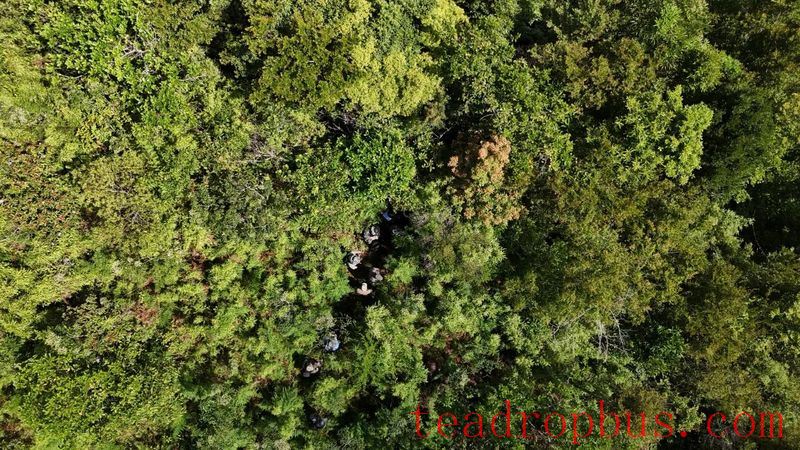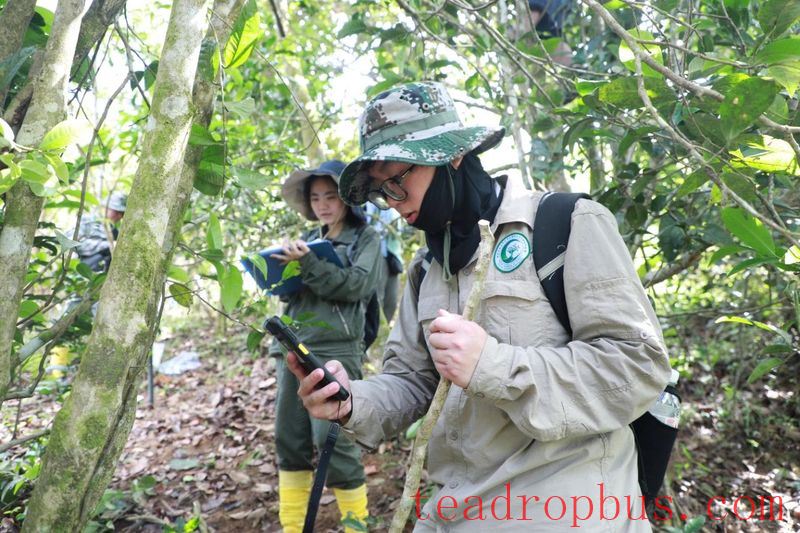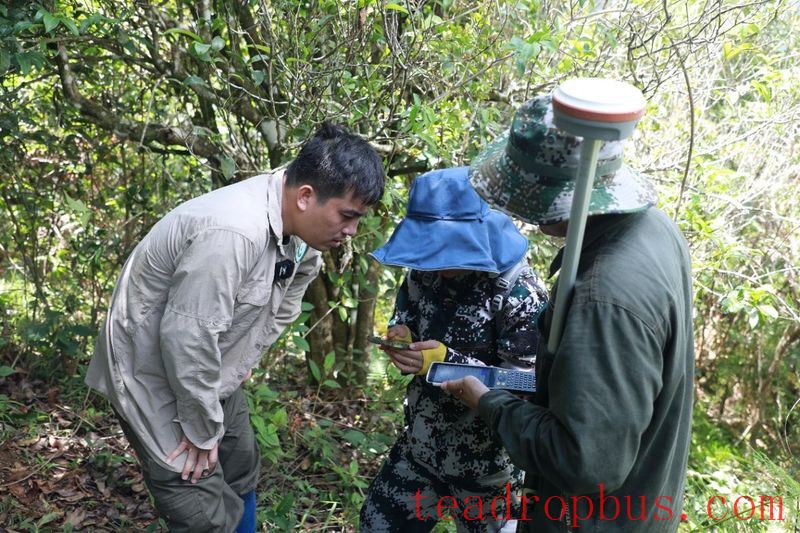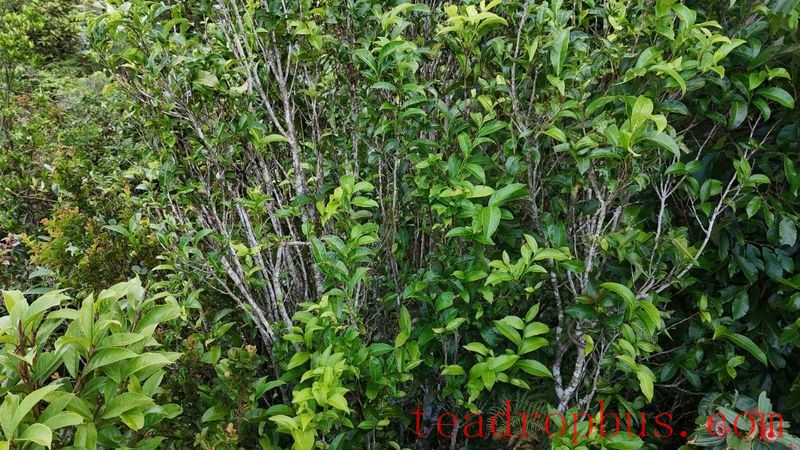Recently, in the dense forests near Fansai Village in Tongshi Town, reporters accompanied a team from the Wuzhi Mountain Branch of the Hainan Provincial Forestry Academy to conduct an on-site survey of wild Tea trees. The mountain here is locally known as Black Ridge and is characterized by its stifling heat, high humidity, overgrown vegetation, and frequent appearances of snakes and insects, with few signs of human activity. After a two-hour climb and search, the team arrived at the area where the wild tea trees are distributed.

Area where wild tea trees are distributed
The reporters observed that nearly one hundred wild tea trees were scattered throughout the forest in clumps. The area is densely vegetated, with fresh air and high humidity, providing suitable conditions for the growth of tea trees. Each wild tea tree was generally over 3 meters tall, with lush foliage. On site, technical personnel measured, registered, numbered, and labeled each discovered wild tea tree, establishing long-term fixed monitoring plots to track changes in their growth and community over time.

Team members from the Wuzhi Mountain Branch of the Hainan Provincial Forestry Academy conducting measurements

Team members from the Wuzhi Mountain Branch of the Hainan Provincial Forestry Academy conducting measurements
It is understood that the wild large-leaf tea trees of Wuzhi Mountain are mainly distributed within the Wuzhi Mountain section of the Hainan Tropical Rainforest National Park and in the forest areas of various towns in Wuzhi City. Due to the complex growing environment of wild tea trees and a lack of effective protection over a long period, the survival status of the wild large-leaf tea trees of Wuzhi Mountain faces numerous challenges. To comprehensively understand the distribution of wild tea trees in Wuzhi Mountain, since 2025, under the guidance of the provincial forestry bureau, the municipal forestry bureau has coordinated with forestry experts, technical personnel, and local forest rangers from the Hainan Provincial Forestry Academy to form a survey team to conduct a census of wild tea tree resources across the city. The surveys have revealed that six out of seven towns in Wuzhi City have distributions of wild tea trees.

Wild large-leaf tea trees of Wuzhi Mountain
To date, around 4,000 wild large-leaf tea trees of Wuzhi Mountain have been surveyed in Wuzhi City, including more than 200 ancient tea trees over a century old, with over 50 samples of wild large-leaf tea resources collected for the germplasm resource bank of Hainan Province. Based on current research into data regarding the status, distribution, and growth environment of wild tea trees, a comprehensive database of Wuzhi Mountain's wild tea tree resources is being gradually established, providing scientific theoretical support for the conservation and development and utilization of the original large-leaf tea tree resources of Wuzhi Mountain.
Researchers indicate that Hainan large-leaf tea has evolved independently in Hainan, possessing rich genetic diversity. As a “third type of tea,” according to current research into its status, distribution, and growth environment, it is also significant for the localized large-scale cultivation of purebred tea tree seedlings and the protection of the genetic material of the original large-leaf tea of Wuzhi Mountain.
Currently, the tea plantation area in Wuzhi City is approximately 15,000 mu (approximately 1,000 hectares), with a production volume exceeding 500 tons, and the overall output value has exceeded 100 million yuan, with more than 230 registered tea trademarks. Moving forward, Wuzhi will continue to implement the eight-character policy of “census, purity, expansion, and increase” for the tea industry, persistently conducting censuses of wild tea tree resources and striving to promote legislative protection for wild tea trees, strengthening daily inspections and supervision, and implementing measures for pest and disease control, continuously strengthening and improving the tea industry to assist in the comprehensive revitalization of rural areas.
Photography: Lin Shisi, Wang Handun, Liu Haipeng
Text: Liu Haipeng